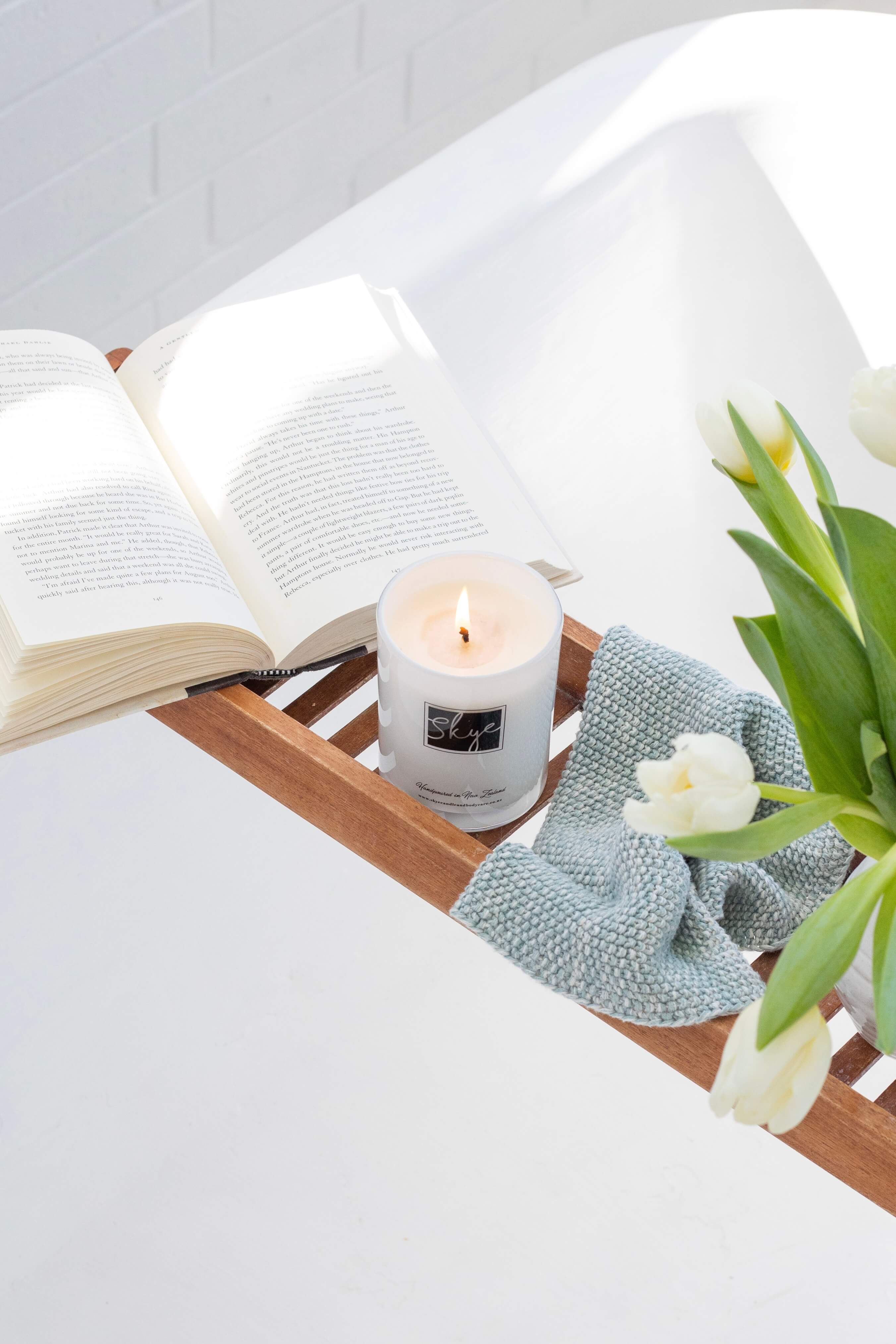Introduction to Kawakawa
Kawakawa, scientifically known as Macropiper excelsum, is one of New Zealand's most treasured native plants. For centuries, it has been used in rongoā Māori (traditional Māori medicine) for its incredible medicinal properties, offering natural solutions for everything from skin care to digestive support. Today, as people seek natural relief for modern skin disorders like eczema, acne-prone skin, and dry skin, Kawakawa is making a powerful comeback.
The leaves of the Kawakawa plant are packed with active ingredients that help repair damaged skin cells, reduce inflammatory skin conditions, and provide gentle care for sensitive skin. Whether used in a healing skin balm, body balms, body oils, or luxurious body moisturisers, Kawakawa offers amazing ingredients to support healthy skin naturally.
The Medicinal Properties of Kawakawa Leaves
Kawakawa leaves are recognized for their powerful medicinal ingredients. These mature leaves, often seen with small insect holes (a natural sign of potent active compounds), contain amounts of antioxidants, anti-inflammatory and immunosuppressant properties, antibacterial properties, and antispasmotic properties.
These friendly ingredients are responsible for reducing skin irritations, calming inflamed skin, soothing itchy skin conditions, and promoting faster recovery for infected skin. They also provide a layer of protection to prevent moisture loss, helping maintain proper moisture retention across the layers of skin.
Because of these powerful properties, Kawakawa isn’t just a short-term solution. Regular use in a daily skincare routine can improve overall skin health, strengthen the skin barrier, and reduce the frequency and severity of flare-ups in eczema-prone skin.
What is Eczema and How Does Kawakawa Help?
Understanding what eczema is can help you appreciate why Kawakawa is such a remarkable solution. Eczema refers to a group of conditions that cause the skin to become red, itchy, inflamed, and cracked. People with eczema-prone skin often struggle with dry skin, itchy skin issues, and occasional skin infection.
Triggers can range from allergens, weather changes, stress, and diet, to genetic predispositions. Managing eczema effectively means not just soothing the symptoms but also strengthening the skin barrier.
Kawakawa is ideal for those undergoing an eczema care journey because it:
- Soothes itchy skin naturally
- Reduces inflammation without side effects associated with steroid products
- Aids in repairing damage to skin cells
- Helps build healthy skin cell growth
- Supports the skin's natural moisture barrier
- Offers faster visible relief without relying on heavy medicated products
Unlike commercial eczema creams or counter creams, Kawakawa-based products like Kawakawa Balm and Kawakawa Body Oil use a natural product approach that works harmoniously with sensitive skin and minimizes the risk of long-term side effects.
Eczema vs Psoriasis: Understanding the Difference
Many people confuse eczema and psoriasis, but they are different conditions.
Eczema typically causes red, inflamed, and very itchy patches. It's often triggered by allergens, irritants, or environmental factors. It severely impacts the skin's ability to retain moisture, leading to moisture loss and recurring irritation.
Psoriasis, on the other hand, is an autoimmune disorder that leads to an overproduction of skin cells. This results in thick, scaly plaques that can crack and bleed. Psoriasis plaques are usually more defined and covered with silvery scales.
While both conditions cause discomfort, eczema is more closely linked to external irritants and is highly responsive to moisturising, barrier-supportive treatments like kawakawa balm. This makes kawa kawa balm nz an effective natural relief for eczema-prone users who want to avoid long-term reliance on steroid cream.
Benefits of Kawakawa for Skin Care
The healing properties of Kawakawa make it a true powerhouse for natural skin health. Its benefits include:
- Deep nourishment for dry - irritated skin
- Immediate soothing of itchy skin conditions
- Helping to calm allergic skin reactions without chemicals
- Healing minor wounds, abrasions, and bug bites naturally
- Reducing redness and inflammation in eczema-prone skin and acne-prone skin
Kawakawa also provides natural relief from the uncomfortable signs of infection like redness, swelling, and irritation, helping skin recover without harsh ingredients.
When used daily, kawakawa balm can maintain long-term moisture retention, prevent moisture loss, and support healthy skin cell growth—critical in managing recurring skin issues.
How to Make Your Own Kawakawa Oil
Making your own kawakawa oil at home connects you directly to the healing energy of this amazing plant.
You’ll Need:
- 1 cup fresh or dried kawakawa leaves
- 1.5 cups Cold-Pressed Unrefined Olive Oil
- A sterilised glass jar
- Cheesecloth or strainer
Method:
- Gently wash and dry the kawakawa leaves.
- Tear or lightly bruise the leaves to help release the active ingredients.
- Place the leaves into the jar and cover with olive oil.
- Seal and leave in a warm spot out of direct sunlight.
- Shake the jar gently every 2–3 days.
- After 6–8 weeks, strain the oil into a clean jar for use.
This nourishing treatment of kawakawa oil can be used on the face, body, scalp, or as a massage oil to deeply hydrate and soothe sensitive skin and inflamed skin naturally.
Which Oils Are Best for Infusing Kawakawa?
While Cold-Pressed Olive Oil is traditional, other oils can add their own unique benefits:
- Sweet Almond Oil: Light and suitable for sensitive, oily, or acne-prone skin.
- Jojoba Oil: Mimics the skin's natural oils, perfect for the face.
- Coconut Oil: Deeply moisturising for cracked heels and very dry skin (use cautiously on the face if acne-prone).
- Grapeseed Oil: Light and full of antioxidants, great for oily or sensitive skin types.
Choosing a high-quality, organic carrier oil preserves the powerful antioxidants and healing properties of your homemade kawakawa infusion.
Kawakawa Tea: Healing from the Inside Out
Kawakawa isn't just a miracle for the skin; it’s also a renowned internal tonic. Traditional kawakawa tea is valued for supporting digestion, reducing inflammation, promoting detoxification, and gently stimulating circulation.
Drinking kawakawa tea can help:
- Improve gut health and digestion
- Calm internal inflammation
- Ease urinary tract discomfort
- Reduce mild headaches and fatigue
- Enhance overall skin health by detoxifying from within
Simple Kawakawa Tea Recipe:
- 5–6 fresh or dried kawakawa leaves
- 2 cups boiling water
- Optional: a teaspoon of Manuka honey or lemon
Method:
- Lightly crush the leaves to release their natural oils.
- Place them in a teapot or mug.
- Pour boiling water over the leaves.
- Cover and steep for 10–15 minutes.
- Strain and enjoy.
Adding kawakawa tea to your wellness routine not only benefits your digestion but also complements your topical skincare, helping you achieve healthy skin from the inside out.
Other Traditional Uses of Kawakawa
Beyond skincare and tea, Kawakawa was historically used by Māori communities in many ways, showing its therapeutic qualities:
- Poultices: Crushed kawakawa leaves applied to bruises, swollen joints, or boils.
- Mouthwash: Fresh leaves chewed or brewed as a rinse for toothaches or gum infections.
- Bath Soaks: Steeping kawakawa in warm baths to soothe widespread skin irritations and ease muscle aches.
- Insect Repellent: Fresh leaves rubbed on the skin to naturally deter mosquitoes and bugs.
These uses highlight how deeply Kawakawa was—and still is—interwoven into daily life, health, and healing traditions in New Zealand.
The History of Kawakawa in Māori Culture
In Māori tradition, Kawakawa is considered a taonga (treasure). It was respected not only for its healing but also for its spiritual significance. Leaves were often used in rituals, blessing ceremonies, and to honor the deceased.
The Māori believed that Kawakawa carried the power to heal both the body and spirit. The plant’s resilience, growing even in tough coastal areas, made it a symbol of strength, endurance, and renewal.
Harvesting Kawakawa was done with immense respect — karakia (prayers) were often said before gathering the leaves to acknowledge the gift of the plant.
Today, using kawakawa balm, kawakawa oil, and kawakawa tea honors this deep, living connection between people and the land.
How to Use Kawakawa Balm Correctly
Using kawakawa balm properly can maximise its healing properties and effectiveness for a variety of skin types and conditions.
For Eczema and Dry Skin:
Apply a small amount of balm directly to the affected area after cleansing.
Massage gently until absorbed. Use twice daily — morning and night — for the best results during your eczema care journey.
For Bug Bites and Minor Skin Irritations:
Clean the area first. Apply a generous layer of kawakawa balm. Reapply after washing or exposure to water to maintain the protective barrier.
For Everyday Moisturising:
Use a small amount on hands, elbows, knees, and heels as an everyday moisturiser to protect against moisture loss and environmental damage. By using kawa kawa balm consistently, you help support healthy skin cell growth naturally, without reliance on steroid products or commercial eczema creams.
The Science Behind Kawakawa’s Healing Power
What makes Kawakawa so effective isn’t just tradition — it’s chemistry. Research into Macropiper excelsum has identified key active ingredients responsible for its powerful effects:
- Myristicin: Strong antibacterial properties; helps combat skin infections.
- Elemicin: Provides analgesic properties for pain and irritation relief.
- Antioxidants: Fight oxidative stress and protect the layers of skin from aging and environmental damage.
When infused into Cold-Pressed Unrefined Olive Oil or blended into body balms, these compounds maintain their potency, delivering a botanical powerhouse right to your skin.
This is why Kawakawa is classified as both a medicinal plant and a modern skincare hero.
DIY Ideas: Kawakawa Beyond Balms and Tea
Besides balms and tea, Kawakawa can be crafted into other beautiful DIY products:
- Kawakawa Scrub: Mix kawakawa oil with sugar or pink Himalayan salt for a natural exfoliator.
- Kawakawa Face Mask: Combine powdered kawakawa leaves with honey and yogurt for a calming face mask.
- Kawakawa Bath Soak: Add a few drops of kawakawa oil and dried kawakawa leaves into your bath to soothe full-body itchy skin issues.
These simple projects allow you to expand Kawakawa’s incredible benefits across your self-care rituals while fully appreciating this wonderful product.
Kawakawa in Modern Beauty Formulations
Kawakawa is now stepping into the global spotlight, becoming a prized ingredient in beauty products worldwide. Leading natural skincare brands increasingly feature kawakawa balm, body balms, body oils, and luxurious body moisturisers built around this native plant’s medicinal properties.
Why?
Because today's conscious consumers demand effective products that are both eco-friendly and kind to the skin — and Kawakawa fits this need perfectly.
You’ll now find kawakawa cream nz ranges expanding into:
- Facial serums for sensitive skin
- Natural eczema and psoriasis relief creams
- Post-sun soothing body lotions
- Baby skincare essentials like nappy rash creams
- Men's shaving balms and after-care lotions
This beautiful evolution shows that an ancient medicinal plant still holds the key to the future of natural skin wellness.
Sustainability and Ethical Harvesting of Kawakawa
As demand for kawakawa balm nz grows, sustainability matters more than ever.
True ethical harvesting involves:
- Picking only mature leaves
- Leaving enough foliage for the plant to thrive
- Gathering respectfully during energy times (when the plant’s healing powers are strongest)
- Never overharvesting in one area
Brands that commit to wildcrafted kawakawa and sustainable practices ensure that this treasure remains available for future generations — preserving not just a plant, but an entire tradition of natural healing.
When you choose authentic kawakawa products, you’re supporting natural resources protection, cultural respect, and ecological balance.
Is Kawakawa Safe for Everyone?
While Kawakawa is generally very safe and tolerated by even the most sensitive skin, it's always wise to do a patch test before first use, especially if you have:
- A history of plant allergies
- Extremely reactive or broken skin
Apply a small amount of kawakawa balm or kawakawa oil to the inside of your wrist and observe for 24 hours. No redness or irritation? You're good to go.
Always choose products made with natural ingredients, free from synthetic fragrances, fillers, or chemicals, to ensure you're receiving only the full healing properties of this magnificent plant.
The Future of Kawakawa in Global Skincare
As consumers seek natural relief for everything from eczema on face to full-body dryness, Kawakawa’s star will continue to rise.
It’s likely we'll see even more innovation in:
- Kawakawa-enriched haircare for scalp soothing
- Kawakawa-rich baby care lines
- Kawakawa-infused sunscreens and after-sun recovery gels
- Balms for skin problems combining kawakawa with other native plants like kūmarahou and mānuka
The demand for natural products with verifiable therapeutic qualities will keep growing — and Kawakawa is perfectly positioned to lead the movement.
Final Thoughts: The Healing Power of Kawakawa Awaits
From ancient Māori healing practices to cutting-edge natural skincare, Kawakawa remains one of the world’s most powerful, versatile, and trusted medicinal plants.
Whether you sip it as a tea, soothe your skin with a balm, or nurture your body with a pure oil infusion, Kawakawa connects you to nature’s pharmacy in its purest form.
No more relying only on counter creams or prescription treatment creams full of chemicals. No more short-term solutions like steroid products that mask problems rather than heal.
Instead, embrace the incredible benefits of Kawakawa:
🌿 Real healing.
🌿 Pure ingredients.
🌿 Respect for nature.
🌿 Wellness for your entire family.
🛒 Explore our complete Kawakawa Balm, Body Oils, and Luxurious Body Moisturisers collection today — and let the true power of native plants transform your skin, your health, and your spirit.
 My Account
My Account




